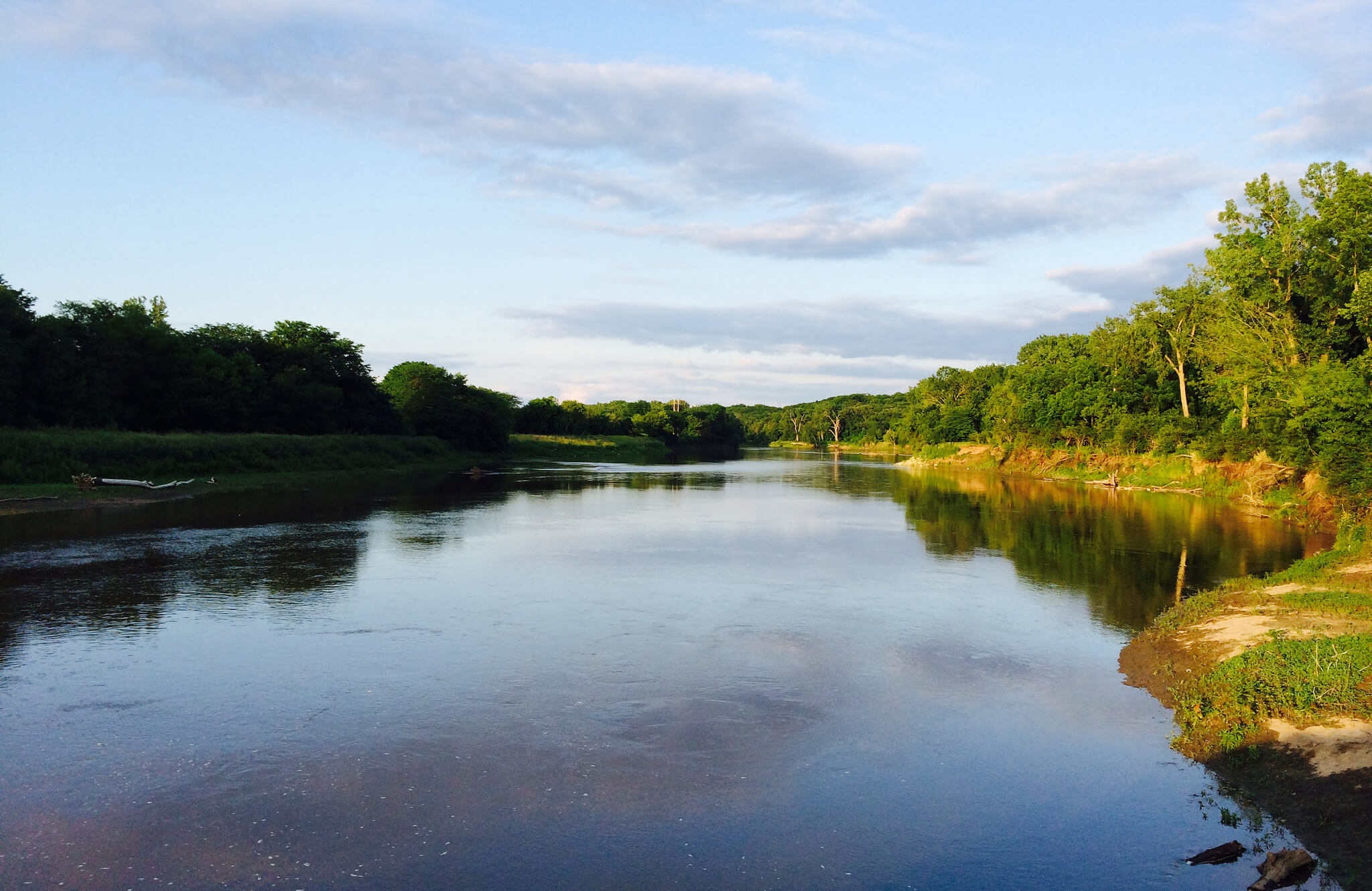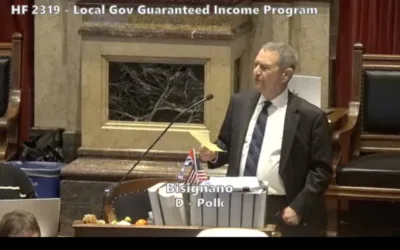
These are not normal times, with real concerns about interference in our elections by a hostile foreign power, powerful voices seeking to legitimize sexist, racist and other discriminatory actions at a level not seen in decades, and what at least feels like wholesale attacks on working families and the middle class.
Yet, other serious challenges persist. Such as the growing impairment of our waters and the growing risk of drought and flood fueled by a heating planet.
More than 50% of Iowa’s waterways that have been tested have been found to be impaired, more than 750 impaired waterways. Iowa is the second-leading contributor to the dead zone in the Gulf of Mexico. Communities across this state struggle to provide safe drinking water to our citizens.
Iowa has experienced flood after flood, not just in cities, but in small communities across our state: Colfax and Cherokee (2010), Hamburg (2011), Greene, Clarksville, and Shell Rock (2016), and Fairbank, Sumner and Fredericksburg (2017). At the same time, drought engulfed much of our state in 2012, and then again in 2017, and now threatens again in 2018.
These are generational challenges requiring bold vision, broad cooperation and significant public and private investment.
In the face of these challenges, the current Republican majority in the Iowa Legislature seems at best impotent, at worst a substantial contributor to their existence.
After cutting millions from many water programs, their current water proposal (Senate File 512) calls for spending up to $27 million a year for unspecified water projects beginning in 2021, with the funding coming from sources currently used for schools, local governments and building infrastructure.
This proposed spending would all be subject to the budgeting whims of a future legislature; it is another Republican “bait and switch” in the making.
Senate File 512 sets no goals. It establishes no watershed management governance. It does not target high-priority watersheds with the state’s investments in water.
The bill does call for annual reporting, but only of the expenditures made, not the results obtained. It calls for a “program review committee” that would not meet until Sept. 1, 2027, and then only every 10 years.
This is a facade. There is a better way.
Iowans should embrace water and other solutions that will help us build a safe, healthy, prosperous and sustainable future for all.
In rural Iowa, we already have solutions that are creating jobs, growing businesses and expanding farm opportunities: wetland and pond restorations, detention basins, vegetated buffer strips, grass waterways, stream bank protection projects, conservation tillage, bioreactors, cover crops and soil health improvements. These projects require workers and equipment.
The same is true in urban areas, with landscape architects and contractors hard at work installing rain gardens and bioswales, wetlands, detention basins, cisterns, rain barrels, other storm water improvements and erosion control practices for development projects.
We can help fund many more of these water solutions with new dedicated revenue sources, such as the Natural Resources Outdoor Recreation Trust Fund and fees on products and activities that endanger our water, and create thousands of good jobs and a more attractive quality of life in the process.
In addition to providing dedicated revenue sources, water legislation should:
- Set short- and long-term goals for reducing water pollution and improving flood and drought preparedness.
- Create a new “Iowa Water Commission” to pull together all federal, state and local agencies working on water issues, including the Leopold Center for Sustainable Agriculture at Iowa State University, which had its funding stripped.
- Direct the Iowa Water Commission to prepare actionable five-year plans with new dedicated funding (like the Iowa Transportation Commission does).
- Provide more financial support for flood and drought preparedness infrastructure and practices in cities both large and small.
- Re-establish and improve measuring and monitoring programs and provide timely reports to the public that focus on results, telling us our return on investment.
- Strengthen the role of cooperative watershed management authorities to act on water quality and water quantity challenges.
- Update the master matrix and improve manure management plans and compliance to better protect our watersheds.
- Ensure “conservation compliance” standards for those receiving public funds through soil and water quality programs.
- Expand ongoing research into better management practices for urban and rural landowners.
Finally, the Legislature – and the new Iowa Water Commission – should call on all Iowans, in cities and suburbs, on the farm, and in rural communities, to participate in protecting our waters.
There is no shortage of citizen-led practices that work, whether it is rainwater harvesting, community cleanups to prevent litter and debris from entering storm water, good-neighbor policies that avoid or reduce lawn chemicals, rain garden projects, or planting prairie and forest buffers.
Together, Iowans can clean up our water and safeguard our communities from the growing risks of drought and flood. But it will take more than a facade to get it done.
by Rob Hogg
Originally printed in Des Moines Register
Posted 1/3/18

Iowa Republicans make outlawing gay marriage key 2024 campaign priority
Iowa Republicans have made outlawing gay marriage a key goal in their 2024 party platform. During the Iowa GOP’s 2024 state convention on Saturday,...

Department of Justice says Iowa immigration law violates US Constitution
If Iowa doesn’t suspend the enforcement of its new immigration law by May 7, the state could face a federal lawsuit, according to the Des Moines...

Rushing: Iowa State president said the quiet part out loud
I want to thank Iowa State University President Wendy Wintersteen for doing us all a favor by finally saying the quiet part out loud: all the...

Iowa sets aside almost $180 million for year two of voucher program
Iowa has committed nearly $180 million in taxpayer funds to support private school tuition in the 2024-25 school year, which is almost $50 million...

Kalbach: Immediate action needed on corporate ag pollution
Iowa agriculture has undergone substantial changes over the past 40 years. We see it all around us. Rather than crops and livestock being raised on...

VIDEO: Jochum calls Gov. Reynolds’ summer meal program a ‘hunger game’
Iowa Gov. Reynolds announced a competitive $900,000 grant program to feed Iowa children over the summer, months after she declined $29 million in...




